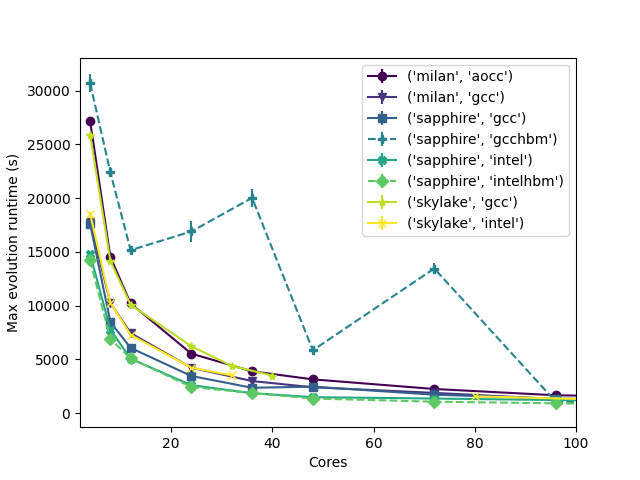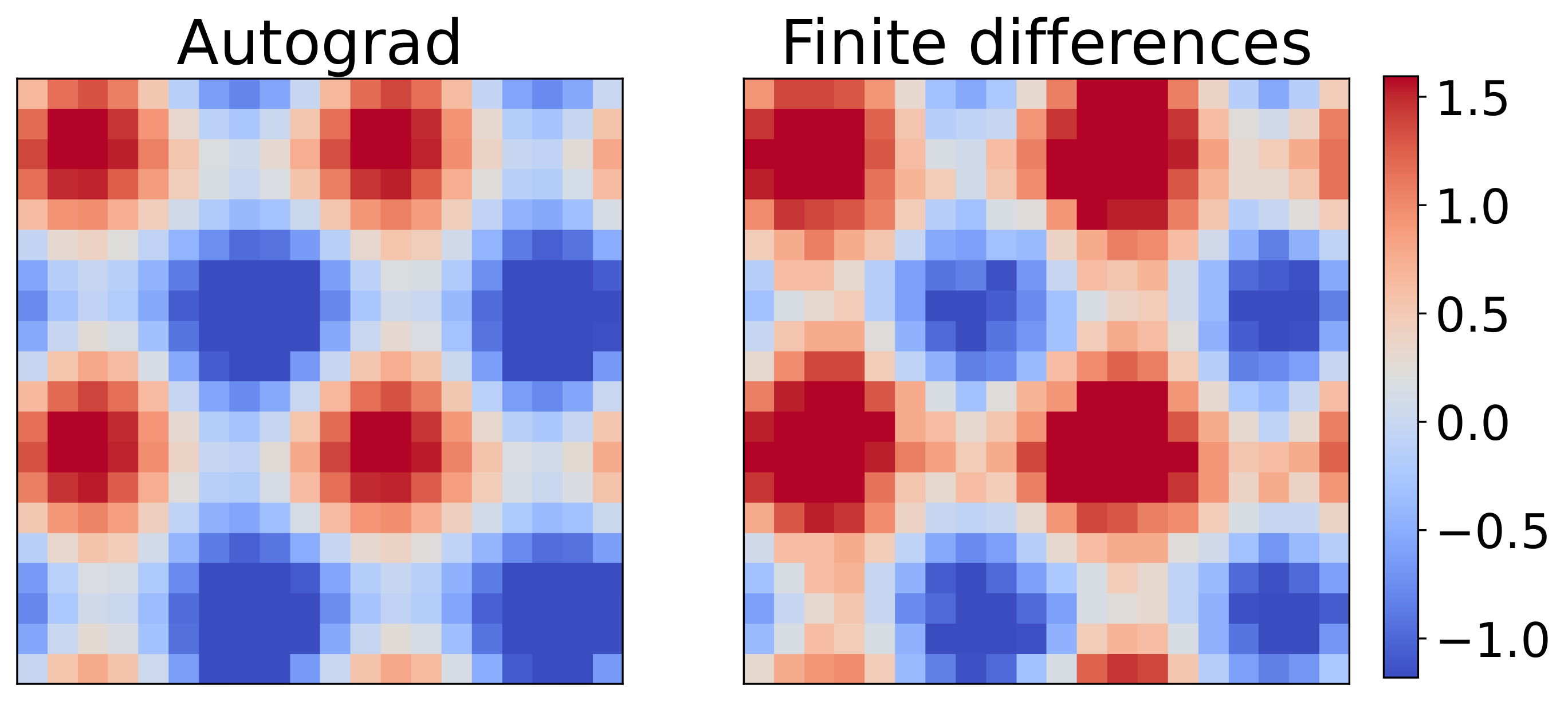SWIFT: A modern highly-parallel gravity and smoothed particle hydrodynamics solver for astrophysical and cosmological applications

0
👁️
Sign in to get full access
Overview
- Numerical simulations have become a crucial tool for astrophysicists and cosmologists to study the universe
- The development of advanced software and algorithms to run these simulations on powerful computing systems is essential
- This paper introduces SWIFT, an open-source, highly parallel, and versatile code that combines hydrodynamics, gravity, cosmology, and galaxy formation modeling
Plain English Explanation
Astrophysicists and cosmologists use computer simulations to study the complex behavior of the universe, from the formation of galaxies to the evolution of the cosmos as a whole. These simulations require sophisticated software that can efficiently leverage the capabilities of the largest supercomputer systems available.
The paper presents SWIFT, a new simulation software package that addresses this need. SWIFT is designed to be highly versatile, allowing researchers to model a wide range of astrophysical phenomena, from the dynamics of gas and dust in galaxies to the large-scale structure of the universe. The software is also highly parallel, meaning it can spread the computational workload across many processors simultaneously, enabling it to tackle simulations with billions of individual elements or particles.
SWIFT's key features include:
- Hybrid parallelism: It uses a combination of shared-memory and distributed-memory approaches to maximize performance on modern high-performance computing clusters.
- Advanced algorithms: SWIFT employs state-of-the-art numerical methods, such as the fast multipole method for gravity calculations and various flavors of smoothed particle hydrodynamics for modeling gas dynamics.
- Modular design: The software is designed to be easily extensible, allowing researchers to add new capabilities as needed, such as models for galaxy formation or planetary physics.
By providing a powerful and flexible simulation tool, SWIFT aims to advance our understanding of the universe and the processes that shape it, from the largest cosmic scales down to the formation of individual stars and planets.
Technical Explanation
The SWIFT software package is designed to efficiently simulate a wide range of astrophysical phenomena, including hydrodynamics, gravity, cosmology, and galaxy formation. It uses a hybrid parallelism approach, combining shared-memory and distributed-memory task-based parallelism, to effectively utilize modern high-performance computing cluster architectures.
For gravity calculations, SWIFT employs a fast-multipole-method, which can be optionally coupled to a particle mesh solver in Fourier space to handle periodic volumes. The code also includes multiple modern implementations of smoothed particle hydrodynamics (SPH) to model the evolution of gas.
SWIFT also includes a state-of-the-art particle-based method to evolve neutrinos, as well as two complementary networks of sub-grid models for galaxy formation and extensions to simulate planetary physics. The software provides a extensive set of output options, including snapshots, light-cones, power spectra, and integration with structure finders.
The authors have performed extensive consistency and accuracy tests to validate the performance of SWIFT, and they demonstrate the code's excellent weak-scaling capabilities using a representative cosmological hydrodynamical problem with approximately 300 billion particles.
Critical Analysis
The SWIFT software package represents a significant advancement in the field of astrophysical simulations, providing researchers with a powerful and flexible tool to study a wide range of phenomena. The authors have clearly put a great deal of effort into designing the code's architecture and implementing state-of-the-art numerical methods to ensure its efficiency and accuracy.
One potential limitation of the research, as acknowledged by the authors, is the need for further development and testing of the sub-grid models for galaxy formation and planetary physics. These models play a crucial role in accurately capturing the complex physical processes involved, and their continued refinement will be essential for SWIFT to maintain its relevance and utility in the field.
Additionally, while the authors have demonstrated SWIFT's excellent weak-scaling performance, it would be valuable to see an analysis of its strong-scaling capabilities, as this can provide insight into the limits of the code's parallelization and its ability to efficiently utilize the largest supercomputer systems.
Overall, the SWIFT software package represents a significant contribution to the field of astrophysical simulations, and its open-source nature and extensive documentation make it a valuable resource for the broader research community. As the field continues to evolve, ongoing development and validation of the code, as well as its integration with complementary simulation tools, will be essential to ensuring its long-term impact.
Conclusion
The SWIFT software package introduced in this paper represents a major advancement in the field of astrophysical simulations. By providing a highly parallel, versatile, and modular code that combines hydrodynamics, gravity, cosmology, and galaxy formation modeling, SWIFT gives researchers a powerful tool to study the complex and interconnected processes that shape the universe.
The code's innovative design, including its hybrid parallelism approach and use of state-of-the-art numerical methods, demonstrates the authors' commitment to pushing the boundaries of what is possible in computational astrophysics. As the field continues to evolve, the availability of open-source, well-documented software like SWIFT will be crucial in driving further scientific discoveries and advancing our understanding of the cosmos.
This summary was produced with help from an AI and may contain inaccuracies - check out the links to read the original source documents!
Related Papers
👁️

0
SWIFT: A modern highly-parallel gravity and smoothed particle hydrodynamics solver for astrophysical and cosmological applications
Matthieu Schaller (Lorentz Institute & Leiden Observatory), Josh Borrow, Peter W. Draper, Mladen Ivkovic, Stuart McAlpine, Bert Vandenbroucke, Yannick Bah'e, Evgenii Chaikin, Aidan B. G. Chalk, Tsang Keung Chan, Camila Correa, Marcel van Daalen, Willem Elbers, Pedro Gonnet, Loic Hausammann, John Helly, Filip Huv{s}ko, Jacob A. Kegerreis, Folkert S. J. Nobels, Sylvia Ploeckinger, Yves Revaz, William J. Roper, Sergio Ruiz-Bonilla, Thomas D. Sandnes, Yolan Uyttenhove, James S. Willis, Zhen Xiang
Numerical simulations have become one of the key tools used by theorists in all the fields of astrophysics and cosmology. The development of modern tools that target the largest existing computing systems and exploit state-of-the-art numerical methods and algorithms is thus crucial. In this paper, we introduce the fully open-source highly-parallel, versatile, and modular coupled hydrodynamics, gravity, cosmology, and galaxy-formation code SWIFT. The software package exploits hybrid shared- and distributed-memory task-based parallelism, asynchronous communications, and domain-decomposition algorithms based on balancing the workload, rather than the data, to efficiently exploit modern high-performance computing cluster architectures. Gravity is solved for using a fast-multipole-method, optionally coupled to a particle mesh solver in Fourier space to handle periodic volumes. For gas evolution, multiple modern flavours of Smoothed Particle Hydrodynamics are implemented. SWIFT also evolves neutrinos using a state-of-the-art particle-based method. Two complementary networks of sub-grid models for galaxy formation as well as extensions to simulate planetary physics are also released as part of the code. An extensive set of output options, including snapshots, light-cones, power spectra, and a coupling to structure finders are also included. We describe the overall code architecture, summarise the consistency and accuracy tests that were performed, and demonstrate the excellent weak-scaling performance of the code using a representative cosmological hydrodynamical problem with $approx$$300$ billion particles. The code is released to the community alongside extensive documentation for both users and developers, a large selection of example test problems, and a suite of tools to aid in the analysis of large simulations run with SWIFT.
Read more4/1/2024


0
A GPU-ready pseudo-spectral method for direct numerical simulations of multiphase turbulence
Alessio Roccon
In this work, we detail the GPU-porting of an in-house pseudo-spectral solver tailored towards large-scale simulations of interface-resolved simulation of drop- and bubble-laden turbulent flows. The code relies on direct numerical simulation of the Navier-Stokes equations, used to describe the flow field, coupled with a phase-field method, used to describe the shape, deformation, and topological changes of the interface of the drops or bubbles. The governing equations -Navier-Stokes and Cahn-Hilliard equations-are solved using a pseudo-spectral method that relies on transforming the variables in the wavenumber space. The code targets large-scale simulations of drop- and bubble-laden turbulent flows and relies on a multilevel parallelism. The first level of parallelism relies on the message-passing interface (MPI) and is used on multi-core architectures in CPU-based infrastructures. A second level of parallelism relies on OpenACC directives and cuFFT libraries and is used to accelerate the code execution when GPU-based infrastructures are targeted. The resulting multiphase flow solver can be efficiently executed in heterogeneous computing infrastructures and exhibits a remarkable speed-up when GPUs are employed. Thanks to the modular structure of the code and the use of a directive-based strategy to offload code execution on GPUs, only minor code modifications are required when targeting different computing architectures. This improves code maintenance, version control and the implementation of additional modules or governing equations.
Read more6/4/2024


0
Benchmarking with Supernovae: A Performance Study of the FLASH Code
Joshua Martin, Catherine Feldman, Eva Siegmann, Tony Curtis, David Carlson, Firat Coskun, Daniel Wood, Raul Gonzalez, Robert J. Harrison, Alan C. Calder
Astrophysical simulations are computation, memory, and thus energy intensive, thereby requiring new hardware advances for progress. Stony Brook University recently expanded its computing cluster SeaWulf with an addition of 94 new nodes featuring Intel Sapphire Rapids Xeon Max series CPUs. We present a performance and power efficiency study of this hardware performed with FLASH: a multi-scale, multi-physics, adaptive mesh-based software instrument. We extend this study to compare performance to that of Stony Brook's Ookami testbed which features ARM-based A64FX-700 processors, and SeaWulf's AMD EPYC Milan and Intel Skylake nodes. Our application is a stellar explosion known as a thermonuclear (Type Ia) supernova and for this 3D problem, FLASH includes operators for hydrodynamics, gravity, and nuclear burning, in addition to routines for the material equation of state. We perform a strong-scaling study with a 220 GB problem size to explore both single- and multi-node performance. Our study explores the performance of different MPI mappings and the distribution of processors across nodes. From these tests, we determined the optimal configuration to balance runtime and energy consumption for our application.
Read more8/30/2024


0
JAX-SPH: A Differentiable Smoothed Particle Hydrodynamics Framework
Artur P. Toshev, Harish Ramachandran, Jonas A. Erbesdobler, Gianluca Galletti, Johannes Brandstetter, Nikolaus A. Adams
Particle-based fluid simulations have emerged as a powerful tool for solving the Navier-Stokes equations, especially in cases that include intricate physics and free surfaces. The recent addition of machine learning methods to the toolbox for solving such problems is pushing the boundary of the quality vs. speed tradeoff of such numerical simulations. In this work, we lead the way to Lagrangian fluid simulators compatible with deep learning frameworks, and propose JAX-SPH - a Smoothed Particle Hydrodynamics (SPH) framework implemented in JAX. JAX-SPH builds on the code for dataset generation from the LagrangeBench project (Toshev et al., 2023) and extends this code in multiple ways: (a) integration of further key SPH algorithms, (b) restructuring the code toward a Python package, (c) verification of the gradients through the solver, and (d) demonstration of the utility of the gradients for solving inverse problems as well as a Solver-in-the-Loop application. Our code is available at https://github.com/tumaer/jax-sph.
Read more7/9/2024